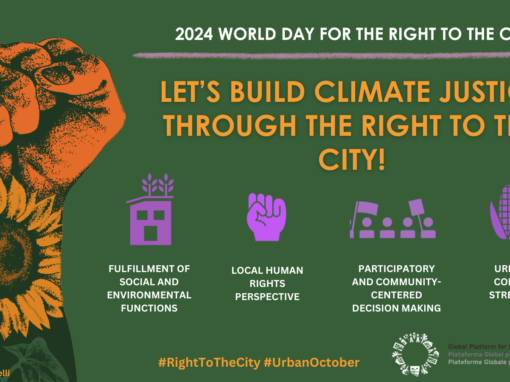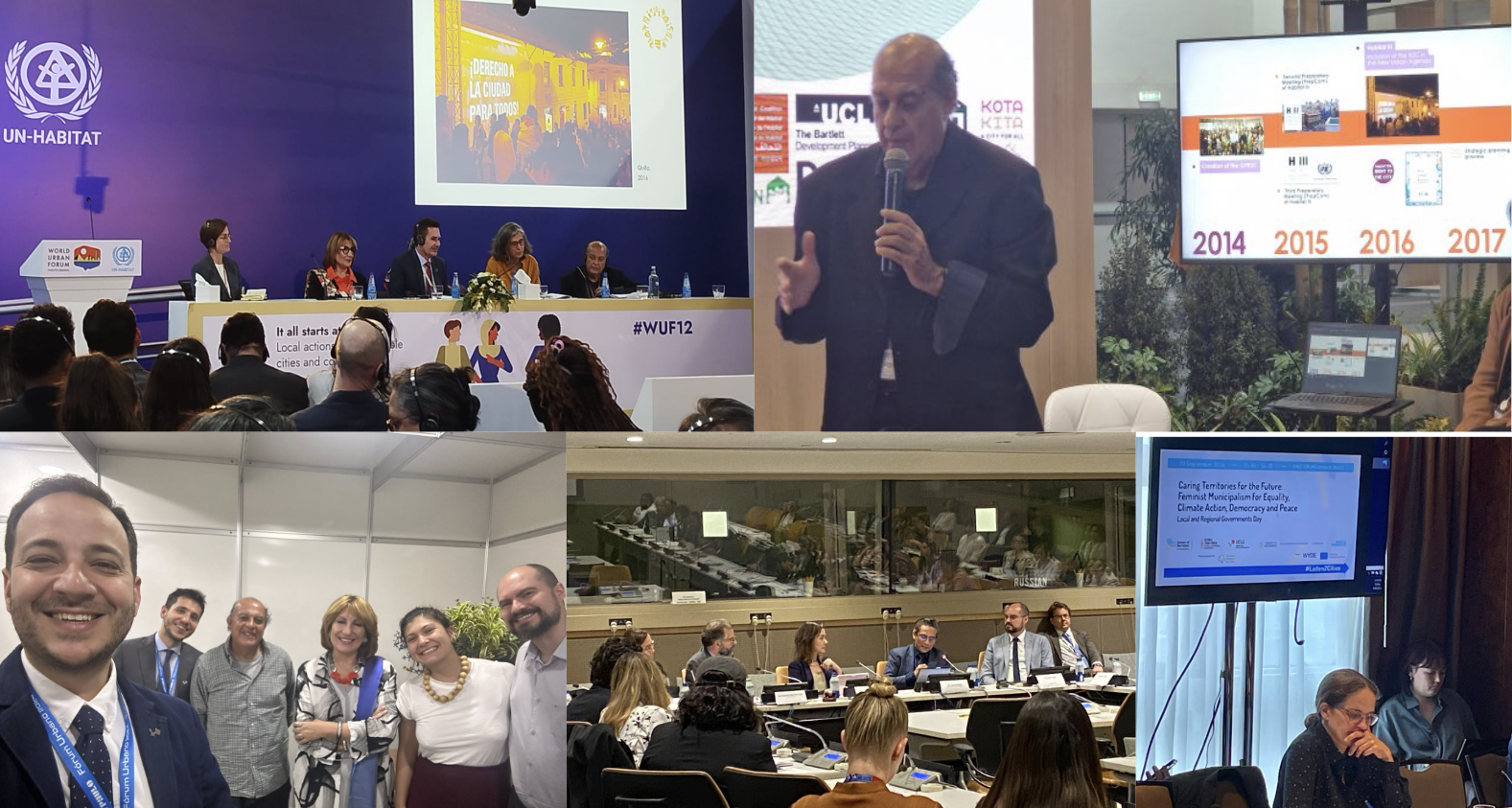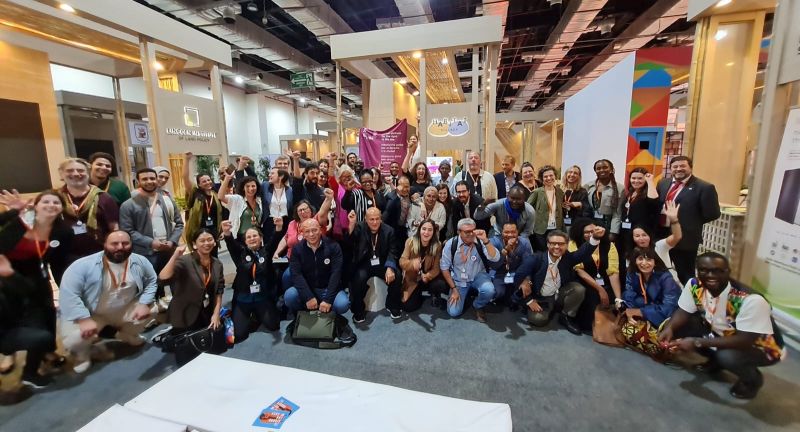Sao Paulo was the first stop of a global planning process that the Global Platform for the Right to the City (GPR2C) is implementing in 2017. This process is supported by the Ford Foundation and is intended to recognize the Platform’s achievements in the last years while opening up the opportunity for an in-depth discussion on the Platform’s future goals.
More than 32 participants from 20 different member organizations* participated in the meeting in Sao Paulo on May 28 and 29. The meeting was divided into two parts. The first day focused on an evaluation of the Platform’s work during the last years, using the Ford Foundation’s Organizational Mapping Tool (OMT). This exercise was adapted to the Platform’s features with the help of Domingos Armani, a professional consultant that the Platform hired to steer the planning process. All participants agreed that, although the tool was not the best way to evaluate the Platform, it allowed for some issues and tensions to emerge. On the positive side, most participants appreciated the Platform’s advocacy work in the past, as well as the support offered by HIC and Polis. On the negative side, participants agreed the Platform needs to improve on its communication strategy as well as on the inclusion of historically excluded voices.
The second day of the Sao Paulo meeting focused on the concept of the Right to the City and the Platform’s organizational nature. Participants were generally satisfied with the work that has been done in the past around the concept of the Right to the City, but they acknowledged the need to simplify its definition and make it accessible to the public by showing common practices that people can identify the concept with. The Platform agreed to take on the job to map the initiatives that its member organizations and others are doing that are directly linked to the implementation of the Right to the City. A common concern was also the need to make the concept legally enforceable, a discussion that is already ongoing among academics both within and outside of the GPR2C.
Regarding the Platform’s organizational nature, participants generally approved its current flexibility and adaptability that they linked to the lack of a formal organizational structure. However, everyone agreed there is a need to establish clear rules about decision-making within the Platform, as well as an organizational framework that allows for increased decentralization of the Platform’s work and resources from the support team to the members. The discussion about the organizational nature is ongoing and will continue until the final planning meeting in Nairobi in October.
There was also time to discuss the global challenges that the world is facing, including the rise of right-wing xenophobic movements and the institutional crisis that some countries are experiencing, Brazil among them. Participants shared concerns over these challenges, which one of them synthesized as follows:
“We need to reinvent ourselves in light of the changes of contemporary society”
However, participants also agreed there is room for optimism particularly in face of the rise of bottom-up movements -among which the sanctuary cities movement- that are responding to global changes by proposing more open and democratic participatory models. The Global Platform for the Right to the City is committed to being part of the solution.
* Cities Alliance, Red Mujer y Hábitat, Interacao SDI, MIT’s DRAN, Techo, Italia IAI, Colegio Nacional de Jurisprudencia Urbanística (México), Instituto Polis, Habitat International Coalition (HIC), IBDU, Global Solidarity Economy Forum / Urgenci, Ford Foundation, Action Aid, Huairou Commission, Avina, Habitat for Humanity, Wiego, UFRJ. Participated online: Odesc, Rosa Luxemburg, UCLG Committee on Social Inclusion, Participatory Democracy and Human Rights.




